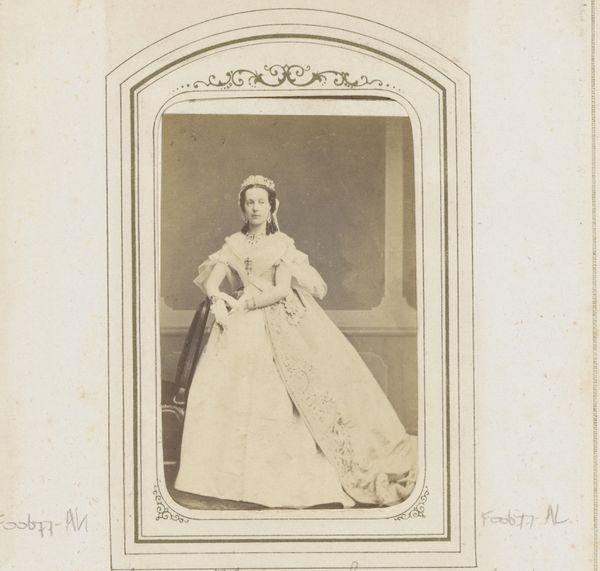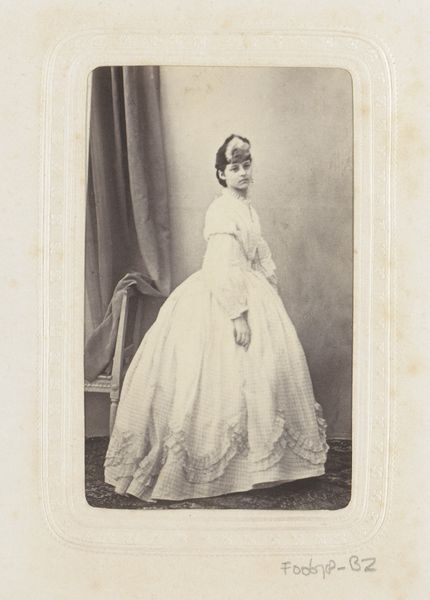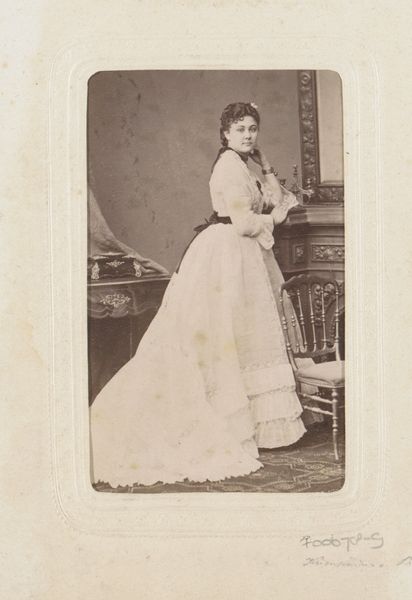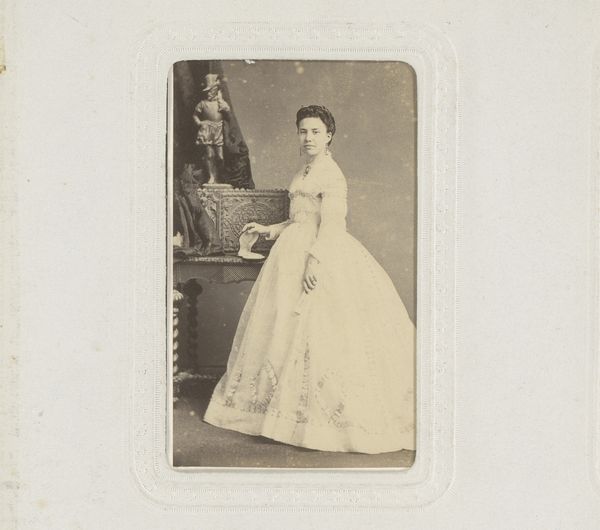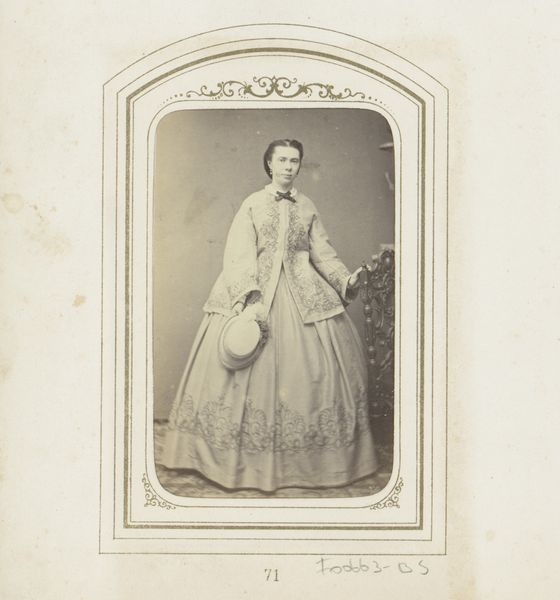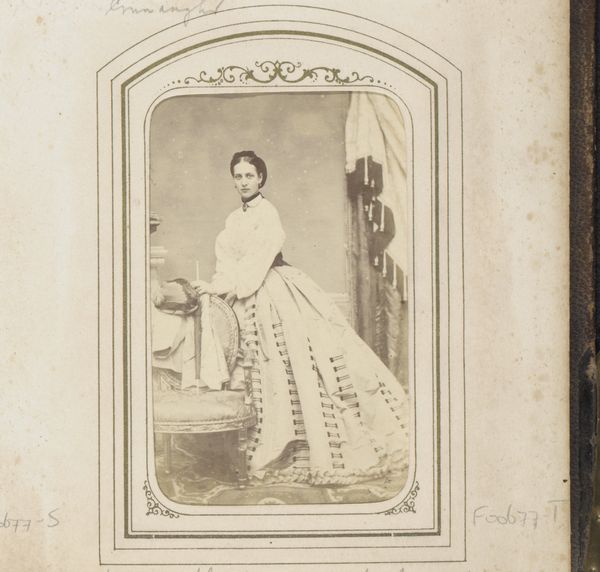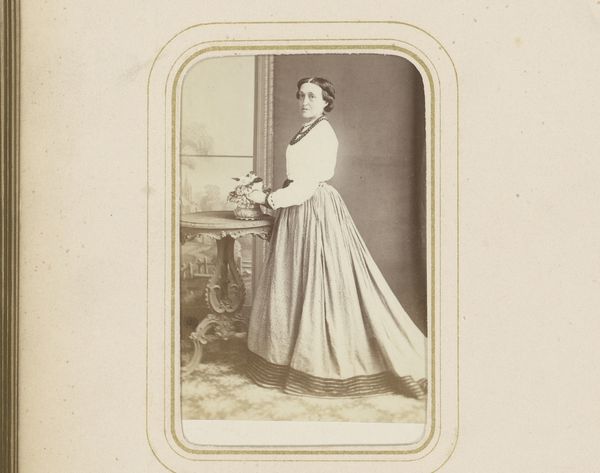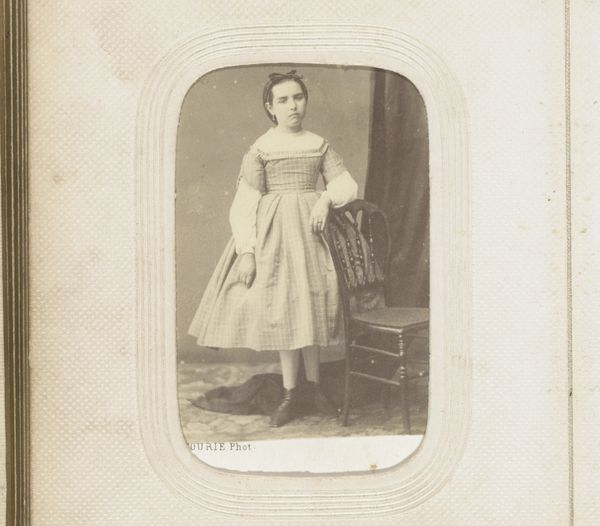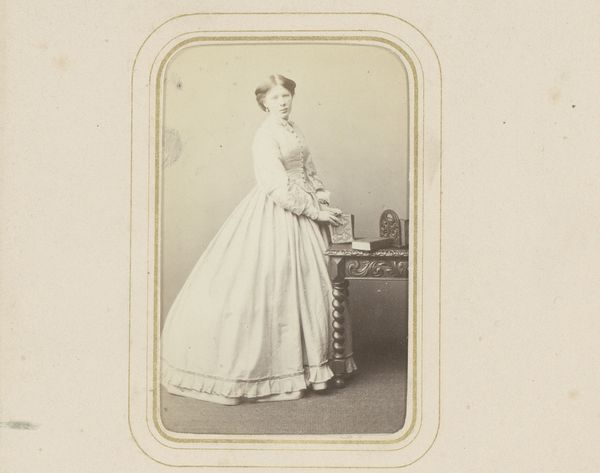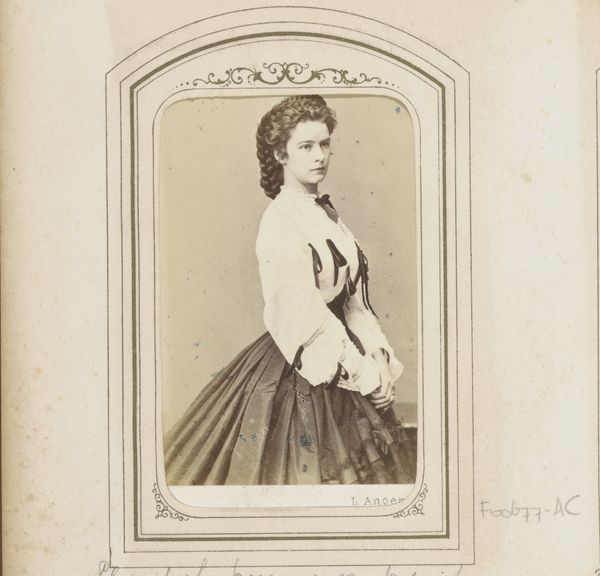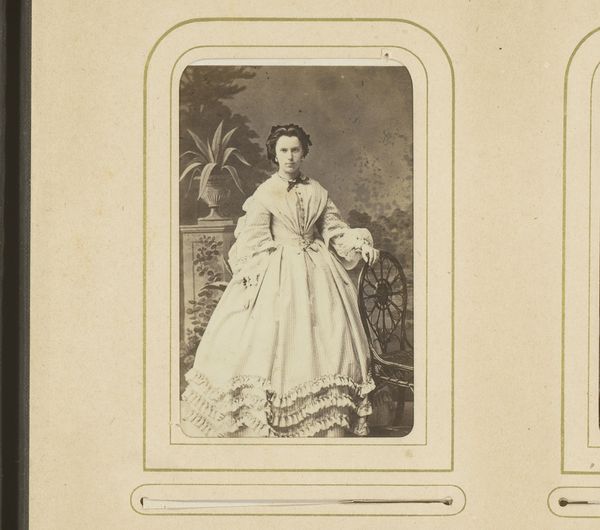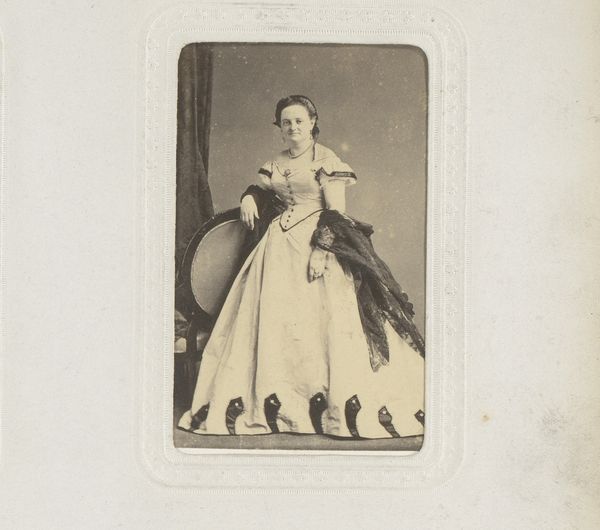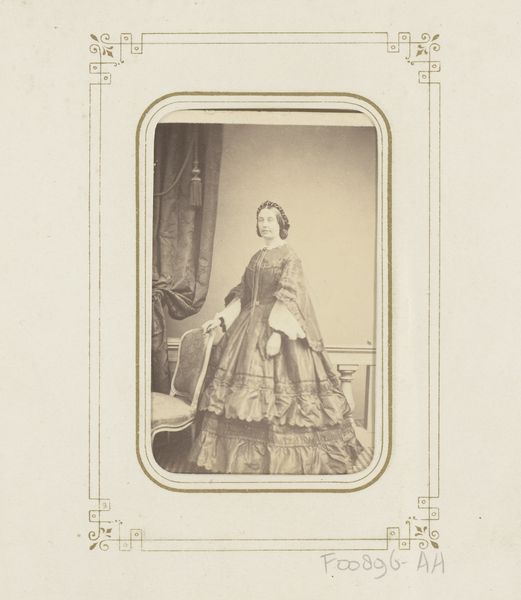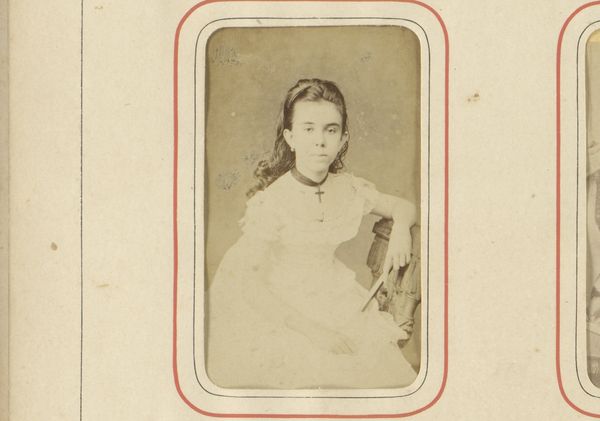
Dimensions: height 85 mm, width 53 mm
Copyright: Rijks Museum: Open Domain
This is a photograph of Dagmar of Denmark, later Empress Maria Feodorovna of Russia, made by Georg Emil Hansen. It was likely produced in the 1860s, within a decade or so of photography's emergence as a widely accessible medium. This image is fascinating as an example of how photography was quickly assimilated into existing hierarchies of power. The portrait adopts many of the visual codes of royal portraiture, but in a new, modern medium. What are the politics of this imagery? The picture constructs a very particular image of European royalty, one of feminine virtue and aristocratic bearing. This was a period in which traditional monarchies were under pressure from emerging democratic movements. What role did images like these play in buttressing existing power structures? Understanding the social and institutional context in which art is made helps us to appreciate its historical significance. Researching the royal families of Europe at this time, and the work of court photographers like Hansen, sheds light on the complex meanings of this image.
Comments
No comments
Be the first to comment and join the conversation on the ultimate creative platform.
